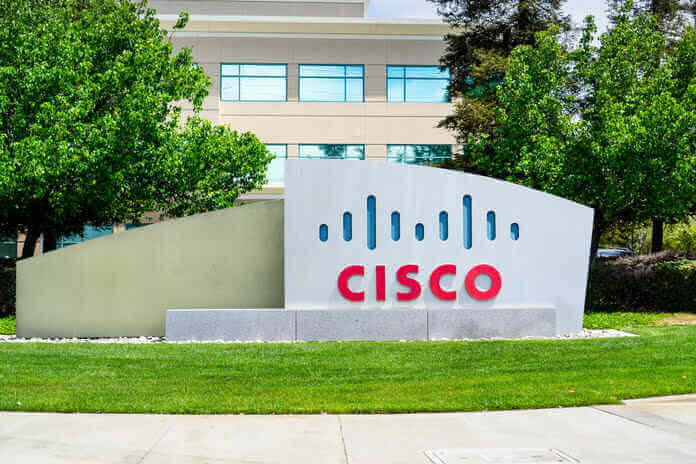After announcing results and an outlook that were better than anticipated, Cisco (NASDAQ:CSCO) increased. The company is not selling at “tech-like” prices, which suggests that there are no tech-like expectations, even though growth is still anticipated to remain subdued in the upcoming year. Given the 3.1% dividend yield and the company’s net cash position, owners should expect aggressive share repurchases. This makes the situation appear to be a shareholder yield story. As investors wait for multiple future expansions, the company is now trading at slightly under 14x forward earnings.
Cisco Stock
The stock has fallen from all-time highs and has essentially been flat for the last five years, so Cisco shareholders have little to cheer about.
Although there are no certainties, value investors are aware that prolonged periods of underperformance can eventually result in future outperformance.
In light of the broader IT meltdown, the market was highly negative going into earnings; the stock had fallen about 30% before the print.
Despite not achieving exceptional growth, Cisco’s earnings were better than anticipated, which caused the stock to soar after the release.
Key Metrics for CSCO Stock
Despite great results from its zero trust solutions, Cisco ended its fiscal year 2022 with flat revenues as “Internet for the Future” revenues (which include 5G, cable, and data centre spend) fell 10%.
The company ended the fiscal year with 3% full-year revenue growth due to flat sales growth. Non-GAAP earnings per share for the quarter were $0.83, a 1% decrease from the prior year. Non-GAAP earnings increased by 4% to $3.36 per share for the entire year.
Cisco increased its total repurchases for the year to $7.7 billion in the third quarter by $2.4 billion. During the year, the corporation also distributed $6.2 billion in dividends. Tech companies that repurchase shares and pay dividends have fared better than others.
Cisco had $19.3 billion in cash and investments at the end of the quarter compared to $9.5 billion in debt. Despite this net cash position’s recent decline, it still presents a long-term possibility for leverage.
The stock price spike was caused by the guidance rather than the results, which weren’t all that interesting. Cisco forecasted revenue growth up to 4% in the upcoming quarter and 6% in the entire year.
This advice indicates accelerating growth as the year closes, possibly raising hopes for continued strength into the following year. Cisco anticipates non-GAAP earnings per share to increase by as much as 6%; management confirmed on the conference call that this forecast did not include any share repurchases.
Is Cisco a Great Long-Term Investment?
Cisco is still addressing long-term market prospects in a significant and expanding manner.
Despite this, it could be a good idea to temper expectations. Cisco has shown consistent growth over the previous few years, although this growth has slowed significantly recently.
Revenue increase in the low single digits is predicted by consensus for the upcoming years. Earnings increase in the single digits is anticipated as a result.
The company’s medium-term guidance of up to 7% sales and earnings growth is not reflected in these consensus estimates.
Cisco is still a very profitable company, but because of its scale, it has to deal with the “law of large numbers.”
Should You Buy, Sell, or Hold Cisco Stock?
In exchange for the slower than anticipated growth, Cisco offers a cash cow trading at fair prices. Recently, the stock was only trading at 14x forward earnings. This company often turns the majority, if not the whole net income, to free cash flow.
In addition, Cisco has a net cash balance sheet, so there is no reason why it couldn’t keep paying dividends and repurchasing shares to all of its owners from free cash flow. If not much higher, I could see the company increasing leverage to as much as 2x debt to EBITDA. At a debt to EBITDA ratio of two, Cisco would have around $40 billion in accessible debt, sufficient to repurchase 20% of the company’s existing shares.
The current 7% shareholder yield and 6% forward growth rate could produce yearly double-digit returns without multiple expansions. To be more in line with the multiples of consumer staples, though, I could see the company re-rating upward to an earnings multiple in the 18x-22x region. Depending on how rapidly the multiple expansion takes place, that might increase the possible yearly return by another 3% to 5%.
Growing dividends and share repurchases may be the key driver of multiple expansion because they are a tried-and-true strategy for achieving larger multiples. The slow growth rates eventually turning negative, at which point lower multiples would not be out of the question, is, in my opinion, the most significant risk in this situation.
As an established player in many markets it serves, cutting-edge disruptors may threaten Cisco. The anticipated multiple expansion might not happen because of the fear of such disruption, whether that concern is justified or not. Due to the competitive value and high shareholder dividend, I rate Cisco as a Buy.
Featured Image: Megapixl @Andreistanescu

















